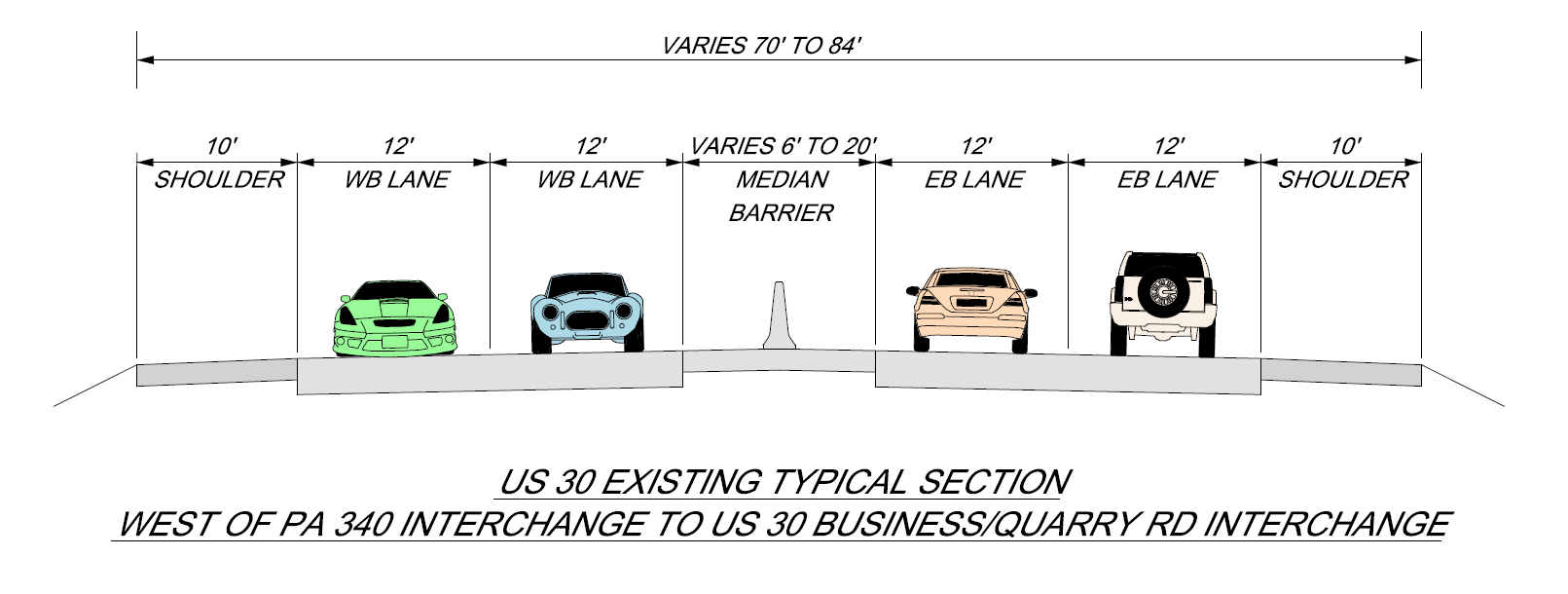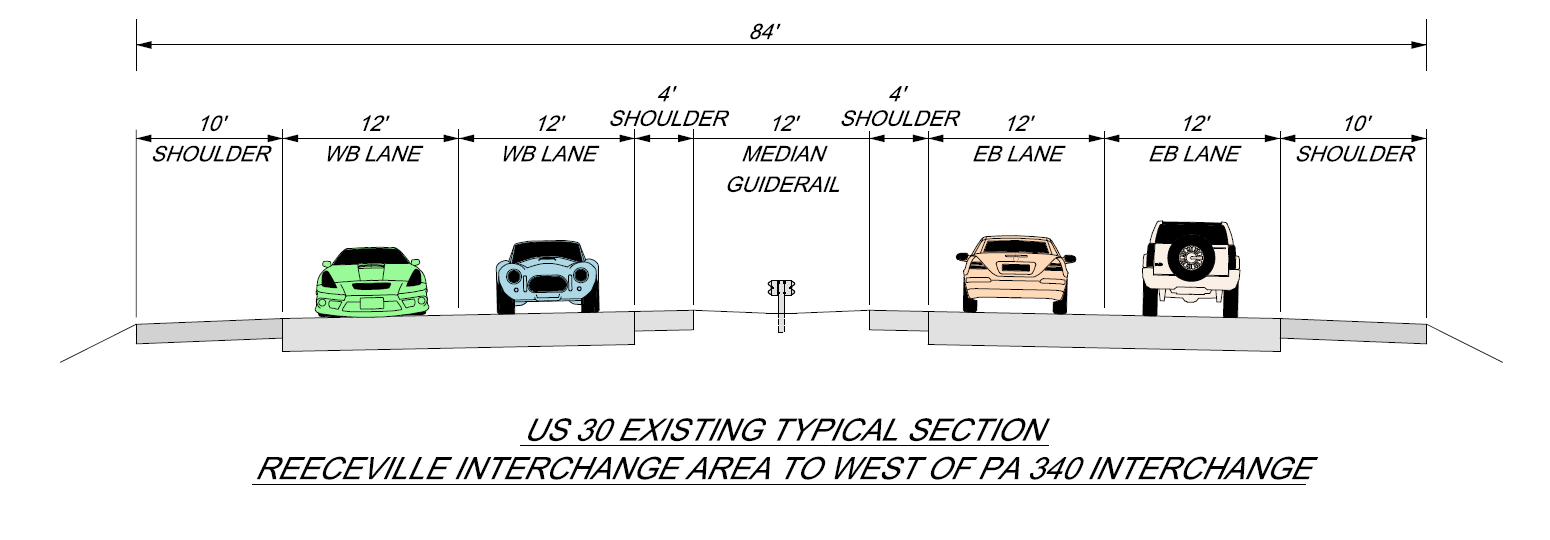The Eastern Section consist of a 7.0-mile corridor of US 30 that extends from just west of the Reeceville Road interchange to the Business US 30/Quarry Road Interchange. The existing typical sections of Mainline US 30 are shown below.

From East Reeceville Road to Business US 30/Quarry Road, Mainline US 30 will be reconstructed to provide two full-time 12 foot travel lanes in each direction, wider flexible use shoulders in each direction, and a median barrier will be provided to improve safety. The conceptual typical section is shown below.
PURPOSE AND NEEDS
Purpose
The purpose of the project is to provide a safe and efficient transportation system by improving safety, reducing future congestion, accommodating planned growth, and improving facility deficiencies.
Needs
The project needs have been identified: Safety, Facility Deficiencies, and Congestion/Anticipated Growth.
- Safety – Multiple locations within the project corridor have crash rates that exceed the statewide average for the same type of facility. Peak travel time congestion, narrow or absent shoulders, deficiencies within the interchange configurations, and inadequate signalization and traffic signal phasing contribute to crashes along PA 340, PA 322, and PA 113 within the project area. Along US 30 within the project area, deficient acceleration and deceleration lanes contribute to crashes at the Reeceville Road and US 322 interchanges, lack of queuing capacity and congestion contribute to crashes at the PA 340 interchange, and narrow shoulders contribute to crashes for all segments.
- Facility Deficiencies – Substandard roadway conditions exist throughout the project corridor. The existing pavement within the project area is approaching the end of its useful service life. The outer (right) shoulders are narrow and deteriorated. The Reeceville Road, PA 340 and US 322 interchanges have two or more ramps with short acceleration and deceleration lengths. The length between the PA 113 and Norwood Road ramps is shorter than required for the areas in which traffic must weave (i.e., the areas in which drivers must change lanes to enter and exit US 30). At the PA 113 interchange, the space between the off-ramps is insufficient. Four structures are currently insufficient in width, eight structures currently have insufficient vertical clearance, and one structure has insufficient lateral (side) clearance.
- Congestion/Anticipated Growth – US 30 currently operates over capacity within the entire project area during certain periods of the day, resulting in congestion and driver delay along the freeway. Also, each of the interchanges within the project area currently operate with delay during certain periods of the day. In the future, growth is anticipated to continue, resulting in higher vehicular traffic volumes and further congestion and delay.



